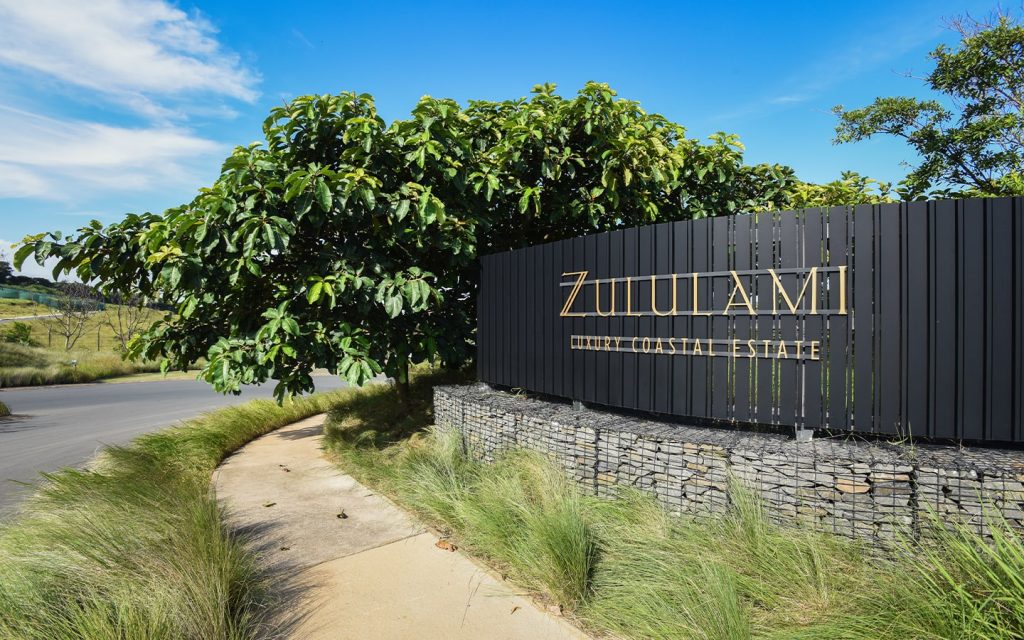Celebrating the Women of Zululami – Bernice Rumble
With August marking Women’s Month, we thought we’d share more on one of the visionaries behind the glorious setting that is Zululami Luxury Estate. Bernice Rumble from Land Art Studio is a lady who needs little introduction, especially in KZN, where she is celebrated for her green fingers and even greener mind that results in the best of biophilic architecture. We sat down with her to chat about all things Zululami, what drives her and what brought her to start Land Art Studio.
Q: Bernice, how would you describe yourself?
A: “I’m an introvert who occasionally drinks tequila, is obsessed with design and how good design feels. I am also humbled by nature’s intelligence and grateful that I get to do what I love and choose to live a simple life surrounded by loved ones.”
Q: What made you start Land Art Studio?
A: “I was fortunate to spend 13 years in a very design-orientated studio, where I was exposed to so much work variety, both local and international. But eventually, there came that natural progression in a professional career where I felt the need to find my own voice in the profession of landscape architecture. I was clear in my intention when leaving – I wanted to layer my love of design with ecology and grow a deeper understanding of the sociology behind the work we do.”
Q: What is special about Land Art Studio?
A: “I have a team of 3. We are small, but I like to think we are efficient. Although we work with focused intent, we don’t take ourselves too seriously. I believe in mentoring through exposure to as many projects and core concepts of the profession as possible. My studio is a place of learning, production, and sometimes chaos. All in all, we are just gardeners who feel humbled and privileged to learn from nature every day and can hopefully be the custodians of this small part of the planet that needs protecting and rehabilitating.”
Q: What makes Zululami special?
A: “Zululami presented us with a challenge that is common on the north coast, TRANSFORM A SUGAR CANE FARM into a residential estate. This process is slow and requires a focus on the non-aesthetic side of design… the ecology. We are fortunate to be working for a client who is ecologically driven and therefore was open to the principles of finding the balance between human need and nature. So in 2017, through extensive alien and cane clearing, the ecological restoration process started.
Zululami’s ecology is dynamic and constantly evolving, what you see today is fairly removed from the farm in 2016, there is now evidence of several more robust biomes present and over time as the soil regenerates through natural processes, the biodiversity and quality of the nature of Zululami should improve. There has been a value given to the nature in Zululami, this is evident in the primary 12 hectares conservation valley that is situated almost centrally in Zululami. This no-go zone for development is the heart and personality of Zululami. It gives the urban form breathing room, allows residents to connect with nature, and provides connectivity to the surrounding neighbouring ecology. This ecological connectivity is proving to be the essence of the North Coast, which has a variety of natural habitats that create a mosaic of ecological diversity. This sustainable diversity can build resilience in the landscape, mitigating against natural disasters.
Zululami has provided essential ecosystem services, like aesthetics, habitat, biodiversity, soil formation, recreation, spirituality, pollination, clean water and air, climate regulation, flood control and photosynthesis to its residents through a restored environment. Zululami’s ecology should be carefully managed and balanced against human need to ensure the ongoing ecosystem services. Interwoven within this ecological framework are aesthetic interventions, that try to balance human needs within nature and are discovered as you engage with Zululami. We have been light-hearted in this sub-tropical context and played with patterns, introduced play, water and elements that connect residents to nature, like the lawn-terraced amphitheatre, boardwalks and trails, the sunrise deck, the bumble bee play pods and harvest garden. Zululami’s outdoors are there to enhance the lives of its residents and we believe they do just that.”
Q: How has Land Art put a unique stamp on Zululami in terms of vegetation?
A: “Zululami has large areas of conservation, so our inspiration was biophilic (from nature), using some of the local KwaZulu-Natal biomes like grassland, swamp forest, coastal forest and wetlands as our guide, however, we also considered the soil conditions which made us introduce some species not endemic to the region, like Sclerocarya birrea (Marula tree). So far, it seems to be liking the sandy soils, and will hopefully also start attracting butterflies and birds and producing edible fruit. The citrus garden also has some special species: Garcinia livingstonia (African Mangosteen), which produces a delicious fruit; Cordyla caffra (Wild Mango) its fruit is not as tasty as the exotic mango but is high in vitamin C, and Clausena anisate (Horsewood), which produced sprays of creamy white flowers, followed by black berries which attract the birds, their leaves can also be substituted for curry leaves. These are some of the species used to encourage the birds, bees and butterflies, the essential fauna that starts to signal a diverse landscape.”
Ready to explore the incredible ecosystems of Zululami? Then it’s most definitely time to join us for a tour. Pack a sun hat, put on those walking shoes, and click here to arrange your tours now: https://zululamiestate.co.za/contact/


